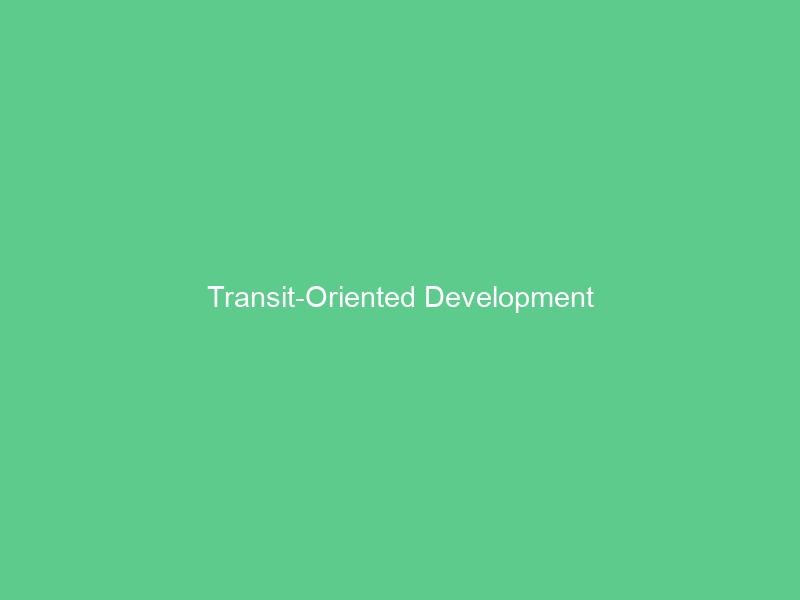TOD communities take advantage of efficient high-frequency transit to connect housing, jobs and services efficiently. By centralizing activity near transit nodes and housing near transit hubs, TOD promotes environmental and social sustainability as well as productivity and equity within urban environments.
TOD planning can be complex and requires thoughtful consideration of multiple values: transit connectivity, quality of urban environment and market potential value. Policies pertaining to TODs should take these factors into account when setting policy decisions.
Community Visioning
Community Visioning (CV) is an officialized process designed to allow community members to have input on how their local area will evolve in the future. While usually led by local governments or planning agencies, visioning initiatives may also be undertaken at grassroots level by dedicated residents. A community-led CV process ensures that any plans made by government reflect what the people want.
Planners and project leaders use inclusive workshops, meetings, and focus groups to facilitate the visioning process. These gatherings allow for open dialogue and collaborative approaches while making sure a variety of voices are heard and included.
These sessions allow input from community members to be used as the foundation of setting desired outcomes and goals, which in turn guide adaptation plans and projects, and ensure their direct and indirect benefits align with community visions for its future.
Station Area Typologies
While the principles of transit-oriented development may be generally similar, it is still essential to carefully consider their application at each station area. Each one presents unique challenges and development opportunities; ultimately the aim is to achieve a balanced mix of uses that includes residential density, well-served commercial areas, open spaces that promote walking and cycling as alternatives to automobile transportation.
Studies have demonstrated the various methods available for classifying and identifying station area types. CapMetro used cluster analysis to categorize its MetroRapid and MetroRail station areas into specific implementation types.
Cluster analysis employs Bertolini’s node-place model to chart a station area’s transit and development components, with additional data about their orientation towards one another (Oriented dimension). This approach can help pinpoint areas for improvement and make them candidates for TODs.
Transit-Supportive Design Guidelines
TODs strive to develop dense and mixed-use developments that enable residents to live, work, play, shop and eat without needing cars. Such development often occurs within walking distance of central transit stations or along transit corridors and includes low, medium and high density housing options as well as shops, restaurants, offices, cultural institutions and schools.
Numerous cities have established TOD goals, policies, and land use regulations within their local jurisdictions. Click here to access a comprehensive listing of TOD plans, ordinances and studies from across the U.S.
Pace has developed a series of guidelines that outline best practices for TOD and Transit-Supportive Development (TSD). These are intended to serve a wide range of audiences – planners, architects, engineers, developers, community organizations and any interested party – including planners, architects, engineers, developers, community organizations and any interested parties who may want guidance for creating TOD that is safe, convenient and attractive to users regardless of physical ability or mode of transportation. These national/international research-based guidelines also offer guidance in creating TOD that offers guidance in creating TOD that create safe, convenient, attractive TOD environments based on national/international research that provide guidance in creating TOD environments which create safe, convenient, attractive environments which provide guidance in creating TODs which meet these criteria – whether in terms of aesthetic appeal as well as safety/convenience/attractivity considerations for TODs alike.
Developing Walkable Communities
Communities designed with walkability in mind offer residents an increased quality of life. Residents in walkable communities experience greater connection to their neighborhood, enjoy better access to shops and restaurants, can increase daily physical activity levels more easily, reduce housing and transportation costs and more!
TOD has become increasingly important to cities today. TOD promotes equitable urban growth while prioritizing pedestrian-friendly infrastructure and working to decrease car dependence.
Local governments can encourage TOD by employing zoning overlays and form-based codes that identify areas where TOD should be promoted, parking management strategies and financial incentives to foster compact walkable communities along transit corridors, working closely with community groups and residents through transparent planning processes to form policies that meet their specific needs along a transit corridor such as providing affordable housing as well as access to high-quality amenities for all.

